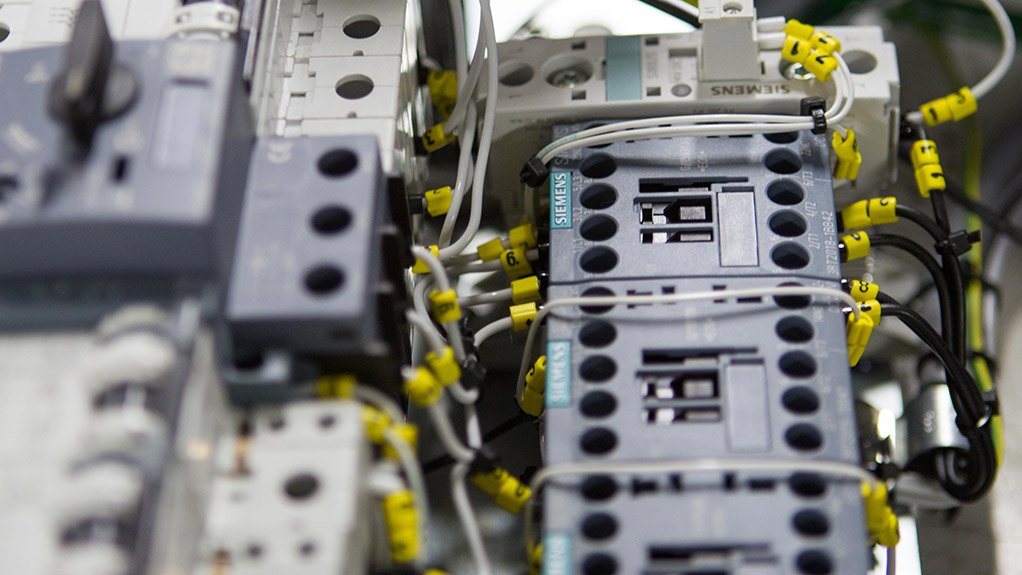- Booyco Electronics (0.03 MB)
/ MEDIA STATEMENT / This content is not written by Creamer Media, but is a supplied media statement.
Company Announcement - Staying on top of the ever changing demands of industry coupled with the pending changes to South African legislation requires a dynamic approach when it comes to Pedestrian Detection Systems. One of the biggest challenges is to get customers to understand the different technologies and what each can do, and then to get them to embrace these technologies. Anton Lourens, managing director of Booyco Electronics, says that often the barrier to embracing technology is cost related and this cannot always be overcome as high-end technology is expensive. “High-end technology development takes time and verification testing outside of laboratory conditions is part of this process,” Lourens explains. “This type of development requires a close working relationship with customers as well as realistic expectations from all.”
Lourens is emphatic when he says that South African companies have the ability to develop and manufacture high-end technology. “We have exceptionally capable developers and engineers and you just need to look across industry sectors to see the depth of knowledge and intellect that resides in this country; it spans all the way from physical mechanical engineering to software and specialist mobile applications. “South Africans are known to be hard workers. We don’t give up easily and it is this very persistence that has produced best-in-class products. Never mind thinking out the box; we generally don’t believe there is a box,” he says.
As an example, Lourens points to the Booyco Controller Interface which is essentially a processing gateway through which all sensing technologies and informational data is channelled to create the requisite artificial intelligence which is fed to the control systems of the various TMM trackless mobile machinery. “Although our use of the latest and high-end technology may be viewed as being ahead of the pack, we believe this will form the base necessity in the future,” he says. Significantly, Booyco Electronics has been at the forefront of the PDS technology development since the company was established in 2006. From the first basic collision warning system to the Booyco Electronics PDS solution of today, the product has gone through three technology improvements. “It is this embracing of newly available technology that has allowed Booyco Electronics to remain best-in-class,” he says.
Industry demands have also changed over this period and it is through the application of the available appropriate technologies that the Booyco Electronics PDS system complies with current South African legislation.
The legislation mandating the use of PDS systems came into being in South Africa in 2015, and Lourens says there are varying levels of involvement in the South African mining market when it comes to the deployment of high-end technology for PDS. He explains that where the development of PDS does not form part of a TMM organisation’s global strategy, that company is less likely to develop systems that will comply specifically and only with South African legislation.
Booyco Electronics’ fully integrated PDS represents the latest generation of this technology and offers a supply of information, which allows the safety intervention capability with a data hub that enables integration with TMM OEM’s underground vehicles and equipment. Each PDS is deployed based on application specific risk assessments ensuring that it is fit-for-purpose, and according to Lourens this same PDS technology’s deployment could vary between different types of vehicles on a single site.
Typically, the Booyco Electronics PDS incorporates VLF technology for pedestrian detection either on surface or underground together with GPS technology for vehicle detection on surface. It delivers specific warning, controlled slow-down and stopping zone alerts around a vehicle when detecting pedestrians or other vehicles. This is unique in that it is able to achieve zone shaping and create narrow band zones in close proximity on the side of the vehicles.
In the event of an emergency, an “emergency call” signal transmitted via the miners’ personal communication tags can bring all vehicles in the area to an immediate stop if installed.
The PDS is manufactured with full self-diagnostics, and is visual and voice display activated in the case of a PDS warning or a system failure. It incorporates various downloading options for recorded data including wireless when at an access point. It is supplied complete with testing equipment for both the surface and underground areas to ensure maximum functionality. The system is also IS-compliant meeting the safety requirements of fiery mines.
Edited by: Creamer Media Reporter
EMAIL THIS ARTICLE SAVE THIS ARTICLE
To subscribe email subscriptions@creamermedia.co.za or click here
To advertise email advertising@creamermedia.co.za or click here















